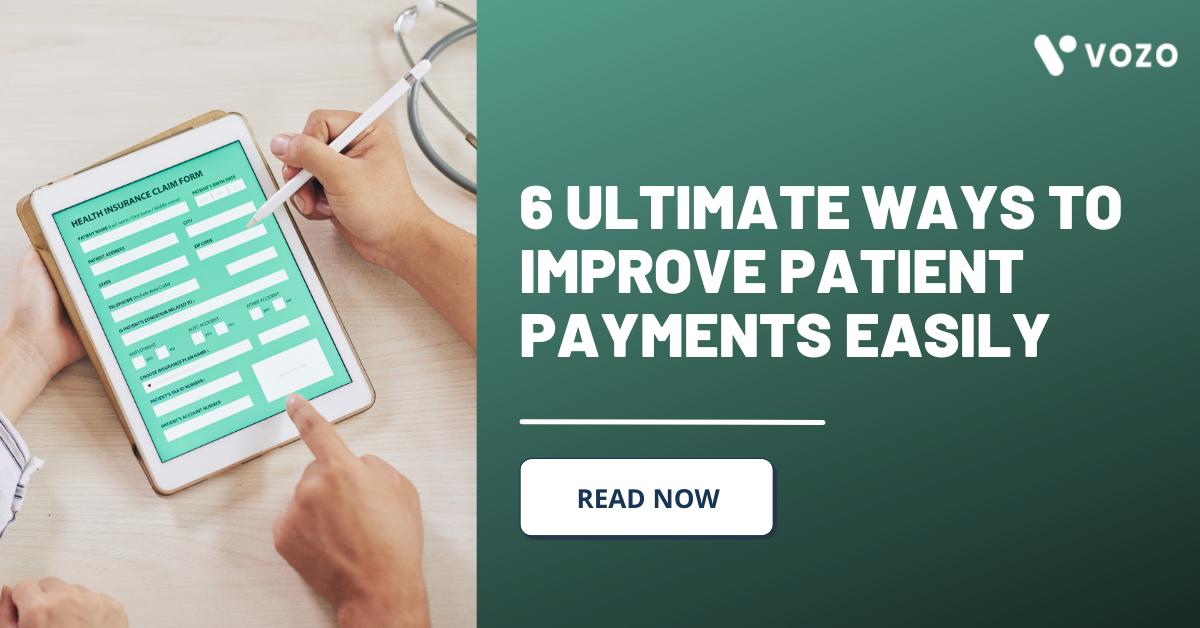6 Ultimate Ways To Improve Patient Payments Easily
Today it is very important to put extra effort to collect more patient payments easily and quickly. Struggling with your patient payments? Here are the 6 ultimate ways to improve patient payments effectively.
1. Collect payment information accurately
After insurance companies pay their portion of the medical bill, patients will often have a balance that on occasion, goes unpaid. Frequently updating patient payment information could reduce the time it takes to receive payment. Nowadays, using snail mail to pay bills is less common and most patients prefer to pay by credit or debit card online.
Installing a credit card on file program at your practice could make the collections process less of a hassle and reduce your days in AR. A credit card on file program is also fairly simple to get started with.
Credit card information can be collected over the phone or at patient check-in. By requesting the patient’s financial information, you place responsibility on them to pay the balance due rather than sending an invoice at a later date without verbal communication.
The strategy of collecting patient payment information upfront is simple and effective, yet often not practiced.
2. Work on the payment plan option
Practices can also reduce patient debt by offering payment plan options. With HDHPs, patients are often not prepared to pay the full balance amount and risk having the balance rolled to bad debt because they can’t afford to pay.
If you’re sending out billing statements, including a payment plan option. With a payment plan option, patients can opt to pay the bill in smaller payments over time and avoid being sent to collections.
There are pros and cons to implementing payment plans into revenue cycle management, but more times than not, a payment plan will help your practice receive payments for services which is better than no payment at all. Most patient payment tools these days will also allow your practice to set guidelines with payment plans so you can set a minimum payment amount and the length of how long payment plans can span.
3. Online payments
Online payment options are the smartest and most efficient way to go for speeding up the payment process. Payment delay is more common when mailing billing statements for obvious reasons, such as lost mail due to outdated patient contact information, and don’t forget the cost of paper and postage for each statement you’re sending.
With e-statements being sent to the patient’s email, patients are informed of their balances much faster and they’re able to pay by credit card, debit card, or check through an online payment portal. Automatic withdrawal is also an option that will expedite patient payments, reduce bad debt, and improve your AR.
When sending e-statements, make sure the payment instructions are clear and that the patient can easily locate their balance, the payment types you accept, and a customer service number should they have questions.
READ MORE: Why Is Accurate Payment Posting Important In RCM?
4. Educate front desk staff about patient payments
Having well-trained front office staff is crucial when it comes to patient payments and revenue cycle management success in general. Your front office staff is the first interaction your patients have with your practice and allows your practice to communicate payment/financial policies to patients.
Front office staff should be properly trained on how to explain insurance plans and patient statements as well as how to ask “how will you be paying today” and not “would you like to pay today.” Your front office also needs to be well versed in explaining your financial policy and the payment options available.
5. Discuss insurance to your patients
Because most of us in the healthcare field understand insurance and the terminology, it can be easy to overlook that most patients do not understand these things. A lack of proper insurance education is one of the top reasons patients do not pay their medical expenses.
Medical practices should emphasize the importance of educating patients about insurance coverage and financial responsibility as their first line of defense against unpaid patient debt.
READ MORE: Optimizing Insurance Eligibility Verification Process: A Step-By-Step Guide
6. Post Financial Policy and Pricing
Most practices require patients to sign off on financial policy paperwork before receiving medical treatment. The amount of documents patients are required to complete can be cumbersome with lengthy policy details and payment requirements.
Removing the mystery of financial policy and pricing for medical care could increase a patient’s likelihood to pay and build trust.
To help patients better understand your financial policy and payment expectations, post clear financial policy statements near the front desk and throughout the practice as needed. Medical service pricing should also be readily available for patients to access so that they’re well-informed on costs and know what to expect.
Summary
Every healthcare practice will have its specific needs and goals. Putting these 6 strategies into action will boost practice revenue effectively. Making the best use of medical billing and patient portal software with help your healthcare practice to achieve better practice growth and patient satisfaction.
About the author

With more than 4 years of experience in the dynamic healthcare technology landscape, Sid specializes in crafting compelling content on topics including EHR/EMR, patient portals, healthcare automation, remote patient monitoring, and health information exchange.
His expertise lies in translating cutting-edge innovations and intricate topics into engaging narratives that resonate with diverse audiences.














